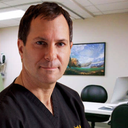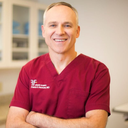Dear Dr,
It's already 3 months since I had transconjunctival lower blepharoplasty done
however the problems I encountered since 1 month after surgery still persists. (hollowing under my lid and my under eye bags are still very prominent under lights)
I'm not sure the bags are due to edema or residue fats, my surgeon say my eyelid need few months to settle down but it seems like I look worse before my surgery.
I'm really worried, depressed and regretting for my decision; your advice will be greatly appreciated.
Thank you very much.
Answers (8)
From board-certified doctors and trusted medical professionals
Dr. Kenneth D. Steinsapir, MD

Dr. Kenneth D. Steinsapir, MD
Oculoplastic Surgeon, Board Certified in Ophthalmology
Answer
Dr. Darrick E. Antell, MD, FACS

Dr. Darrick E. Antell, MD, FACS
Board Certified Plastic Surgeon
Answer
Dr. Frank P. Fechner, MD

Dr. Frank P. Fechner, MD
Board Certified Facial Plastic Surgeon
Answer
Dr. William Portuese, MD
Dr. William Portuese, MD
Board Certified Facial Plastic Surgeon
Answer
Dr. Christopher L. Hess, MD
Dr. Christopher L. Hess, MD
Board Certified Plastic Surgeon
Answer
Dr. Kamran Khoobehi, MD
Dr. Kamran Khoobehi, MD
Board Certified Plastic Surgeon
Answer
Dr. Brooke R. Seckel, MD, FACS (retired)
Dr. Brooke R. Seckel, MD, FACS (retired)
Board Certified Plastic Surgeon
Answer
Dr. George J. Beraka, MD (retired)
Dr. George J. Beraka, MD (retired)
Board Certified Plastic Surgeon
Answer
More Eyelid Surgery Questions
See all Eyelid Surgery Q&AWE SEND PRETTY
EMAILS
What’s trending? Who’s turning heads? Which TikTok myths need busting? We’ve got you. No fluff, no gatekeeping—just real talk. Get our free, unfiltered newsletter.